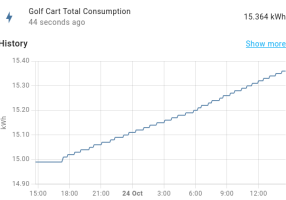pluc99
Lifetime VIP Member
I get the impression that you're thinking mainly about the leisure batteries, which are unlikely to drain significantly in just 6 weeks. It's the starter battery that is more at risk when stationary for longer periods.I’m in the same position, and occasionally don’t drive for 6 weeks. I know that is not ideal, but I do check the battery charge occasionally and doesn’t deplete quickly at all. Last check was >60hrs after not driving for 3 weeks.
It’s crossed my mind to drive it for the sake of the batteries, but that doesn’t sit well with me, and I’ve thought about an eco flow or similar but can’t bring myself to pay £1000 when there isn’t (yet) an issue. But will brace for £500 to replace the batteries in due course, perhaps quicker than if I’d plugged in monthly.
















